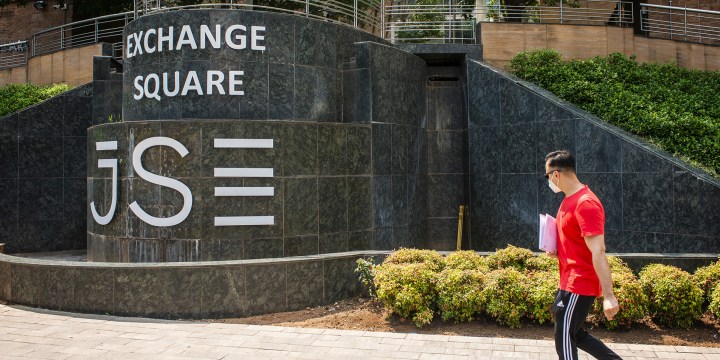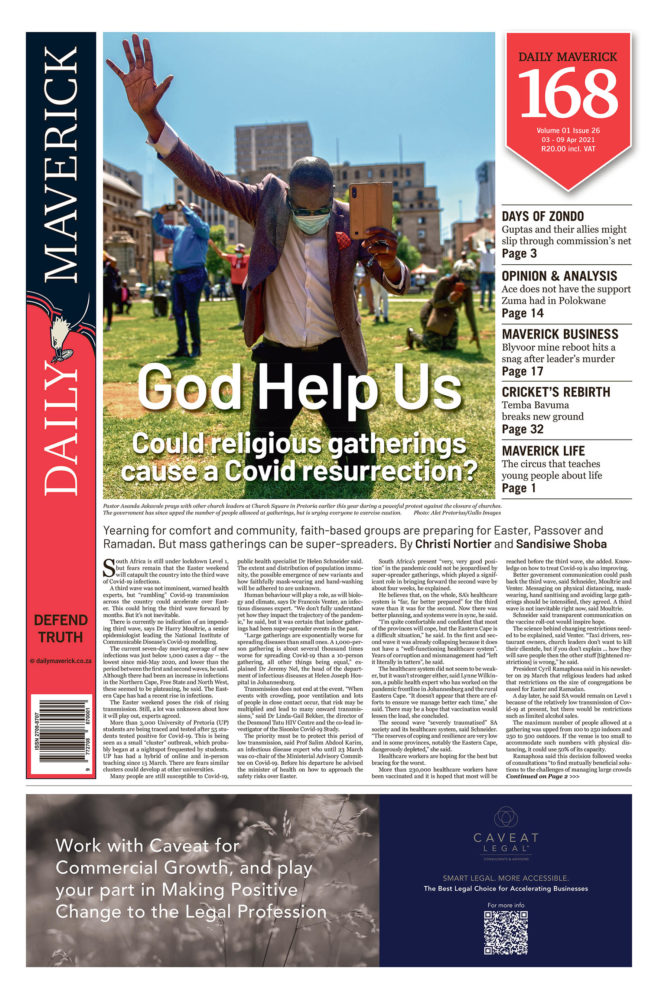BUSINESS MAVERICK 168
Easy ways for average investor newbies to get a toehold in the stock market

Investing in the stock market or equities can be daunting, but relatively simple investment vehicles, such as unit trust funds and exchange-traded funds (ETFs), mean that it is easily accessible to the average investor. Here’s what you need to know.
First published in the Daily Maverick 168 weekly newspaper.
Kingsley Williams, chief investment officer at Satrix, says the key difference between the two is that an ETF is accessed through an exchange such as the JSE, while a unit trust is accessed through the management company that issues the unit trust, such as Allan Gray or Coronation.
November 2020 marked the 20th anniversary since South Africa’s first ETF was introduced by Satrix. According to etfSA, a financial services provider, there were only five new ETFs issued in 2020. The five new ETFs all tracked foreign assets and were issued by Satrix.
The convenience of an ETF lies in being able to increase your exposure to different underlying assets by, for example, investing in the Satrix Top 40 ETF, which gives you exposure to the top 40 stocks listed on the JSE in a single investment.
Iva Madjarova, head of investment consulting at Sygnia, notes that ETFs are available across every major index, offering investor diversification. ETFs are also transparent and flexible, as they can be bought and sold at any time during the trading day through a stockbroking account.
Weighing up costs
There are key cost differences. You will pay management fees on both ETFs and unit trusts, but these fees may be lower for ETFs since there are lower administrative costs.
“ETFs are also accessible through platforms such as etfSA or Sygnia, and charges for investments via the platform will differ depending on the platform and the number of assets you have through that platform as an investor,” Madjarova says.
When it comes to costs, your starting point is unpacking the various line items that make up the Total Investment Charge (TIC) of a product. Williams helped break it down:
Management fee. This is the fee charged by the management company and covers investment management fees, trustee fees and audit fees.
Total expense ratio. The TER is primarily made up of the management fee above, but includes other fund expenses, such as custody charges and VAT.
Transaction costs. TCs are the costs incurred as a result of trading the underlying securities within the fund.
Total investment charge. The TIC is calculated by adding the total expense ratio and transaction costs.
“On a like-for-like basis (that is, tracking the same index), an ETF typically has lower transaction costs relative to an equivalent unit trust, because of the different ways ETFs and unit trusts deal with contributions in and withdrawals out of the fund,” Williams says. “An ETF may also have a lower [total expense ratio] than an equivalent unit trust due to efficiencies in the record-keeping and administration of investors holding/transacting in shares of ETFs versus the units of a unit trust.
“These two factors combined typically result in an ETF having a lower [total investment charge] than an equivalent unit trust.”
Diversify
While an ETF may be lower in costs, a unit trust offers the flexibility of different fee classes to cater for different types of clients.
Williams says unit trusts tend to be better suited to multi-asset (balanced) funds, as they don’t need to deal with market making across a variety of asset classes. For example, investing in a balanced fund unit trust will give you exposure to property, equity, cash and bonds in one investment. This means your investment portfolio is easily diversified.
That easy one-stop diversification means that a novice investor could be best served by starting out with a balanced unit trust fund and then expand their investment portfolio to include ETFs once they are more comfortable navigating the investment world.
Price swings
Madjarova says ETFs are listed on a registered stock exchange and trade throughout the day at a fluctuating price, so you can take advantage of price swings. Index unit trusts, however, are not listed and are priced at a unit price every trading day at 3pm.
“Unit trusts always trade at the actual market value of their assets, while the prices of ETFs, like any other share, are set by the forces of supply and demand and may deviate from the market value of the underlying shares,” she says.
Accessing your money
The past year has served as a global lesson on the importance of having funds available in an emergency. When it comes to getting your money out of the investment, ETFs trade immediately but have the same settlement cycle as equities, which means you will get your cash out within three days of trading.
Unit trusts have a T+1 settlement cycle, which means you get your cash out one day after your fund manager acts on your instruction to disinvest or cash out.
Williams adds that ETFs are now available on linked investment service providers (Lisps). Think of a Lisp as a one-stop shopping platform where you can access a variety of underlying investments.
“If you choose to invest via a Lisp, the decision then becomes which vehicle offers the exposure or investment strategy you require within your portfolio and which vehicle offers the most cost-effective exposure to that strategy,” he says.
Know your goals
Successful investing does not have to be an either-or scenario.
Madjarova says making a choice to invest in a unit trust or an ETF largely comes down to personal preference.
“There is no reason not to have both [ETFs and unit trusts in your investment portfolio], particularly if your investment platform caters for both.”
Williams says there may be investment strategies you want exposure to that may only be available in one vehicle and not the other. “It is important to weigh up the different objectives of your savings and investments journey and combine the most appropriate vehicles and funds to achieve those objectives,” he says. DM168
This story first appeared in our weekly Daily Maverick 168 newspaper which is available for free to Pick n Pay Smart Shoppers at these Pick n Pay stores.



















 Become an Insider
Become an Insider
Comments - Please login in order to comment.